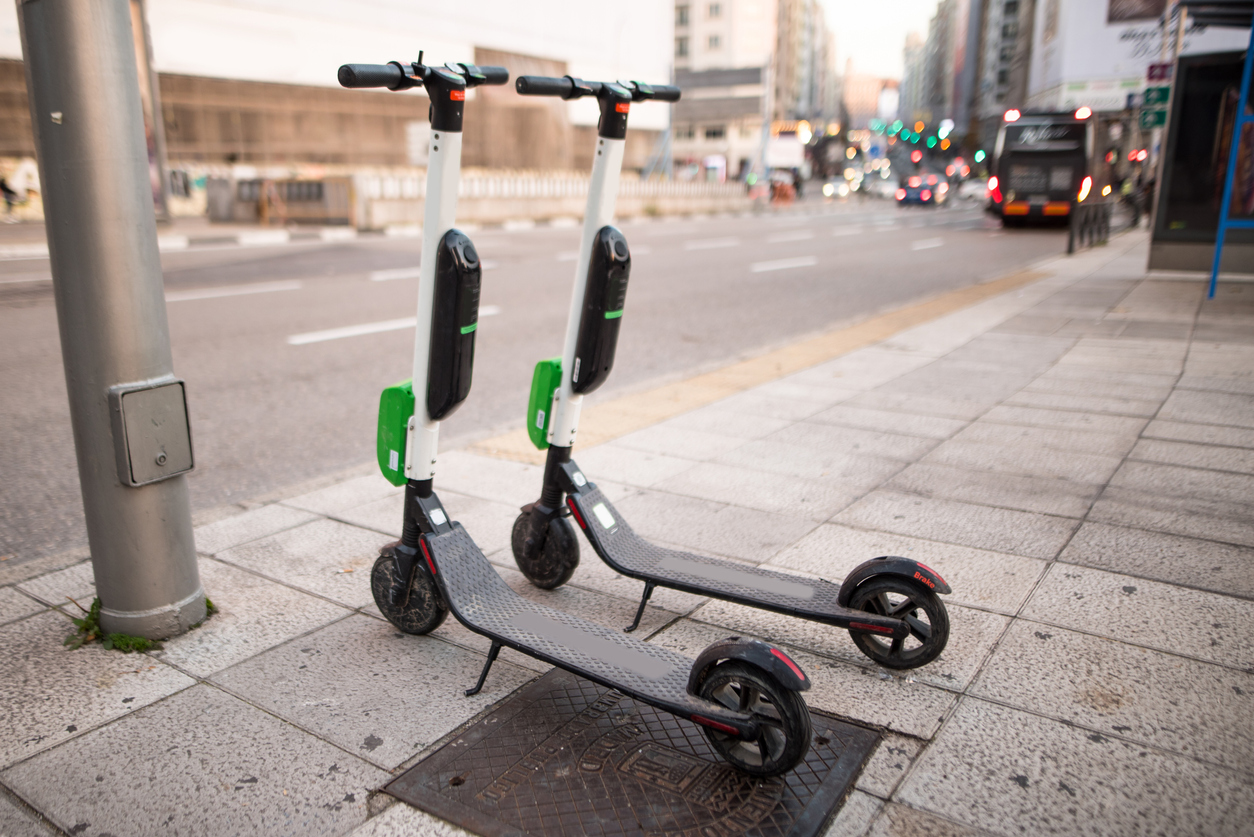E-Scooters: Scourges or Saviors? The First Scooter Policy Checklist
 Even though e-scooters—which run on electric motors—have been on our streets for less than two years, they’ve done more to divide friends, neighborhood listservs and public meetings than a timeworn sports rivalry. Combine the heated public discussion with catchy company advertising and it becomes easy to mix up scooter fact and fiction. What are the true environmental benefits, what are the threats to public safety and what is hyperbolic not-in-my-backyard (NIMBY)-ism?
Even though e-scooters—which run on electric motors—have been on our streets for less than two years, they’ve done more to divide friends, neighborhood listservs and public meetings than a timeworn sports rivalry. Combine the heated public discussion with catchy company advertising and it becomes easy to mix up scooter fact and fiction. What are the true environmental benefits, what are the threats to public safety and what is hyperbolic not-in-my-backyard (NIMBY)-ism?
Sometimes the excitement of a new technology can lead us to embrace the shiny before we’ve analyzed the dull dross of facts. But, as an environmental economist, I’m trained to analyze risk and weigh public cost and benefits and scooters—fun as they may be—can be thought about critically in this context. In particular, the full lifecycle of the scooters should be considered—how they’re made, how they’re used and how they’re disposed of—in addition to the consequences of their use. Therefore, for those deeply embroiled in the scooter debate, here’s the first (as far as I can tell) scooter policy checklist.
- Pollution: The most common argument made in support of scooters by their manufacturers is that they decrease air pollution. This is a relatively straightforward calculation if scooter trips are replacing gasoline burning car trips, if they are charged with low-carbon electricity, or if a scooter company purchases carbon offsets. However, if a company charges scooters with dirty energy it’s easy to hypothesize they may actually increase pollution by increasing demand from nearby power sources. For example, one recent study from North Carolina State University concluded scooter companies should use more energy-efficient vehicles as they travelled around town to maintain their scooter fleets because, in two-thirds of the scenarios modeled, the resulting emissions associated with e-scooter use were higher than the modes of transportation the scooters displaced. Further, in addition to lithium, Li-ion batteries in scooters need raw materials such as copper, calcium carbonate and fossil fuels that cause environmental degradation during the battery’s manufacture. A study conducted for EPA by my colleagues found that manufacturing the typical Li-ion battery released 591 grams CO2e per kWh of battery capacity. This is roughly equal to the carbon pollution created from driving your car a half-mile, assuming a scooter contains a 300Wh battery.
- Scooter Disposal & Hazardous Materials: In DC, one doesn’t have to look hard to find a vandalized, abandoned, or forgotten scooter and these scooters contain hazardous materials. Their Li-ion batteries may catch fire if subjected to abuse, improper charging, or excessive heat. Think of the countless products that caught fire containing Li-ion batteries in the last decade (e.g., hoverboards, Samsung Galaxy phones, e-cigarettes). In fact, scooter fires have occurred in D.C. already. Communities should plan to collect and dispose of discarded e-scooters to reduce fire risks from mistreated vehicles and, ideally, recycle the valuable materials inside their batteries.
- Changing Modes of Transportation: Introducing a new mode of transportation is likely to have ramifications on the way a community moves from point A to B. For example, Portland, Ore., found scooters replaced walking trips (as this author can attest from his own habits) 42 percent of the time. If a community wishes to encourage walking, experience suggests scooters may compete with these efforts. On the other hand, Portland estimates scooters replaced approximately 301,856 vehicle-miles traveled, which they estimate prevented the emission of 122 metric tons of CO2e.
- Public Safety: Public safety is another common concern of NIMBY activists who suggest careless riders will hit pedestrians. However, scooter riders seem to be the most common victims of scooter-related injuries and those are rarely the result of sidewalk collisions with pedestrians. Portland found most injuries seen by emergency rooms were not severe enough to warrant emergency transport. Helmet use is rare and that accounts for a significant subset of injuries occurred in riders younger than 18 years old. Some easy solutions to these problems exist: incentivize helmet use, limit scooter speeds, limit their use at night and/or ensure the proper infrastructure exists to protect riders such as protected bike lanes.
- Tax & Municipal Revenues: Many municipalities, including D.C., have charged permitting fees per vehicle or business permit fees to scooter companies. These new revenues can cover the costs of administering scooter programs or be used to offset some of the negative externalities associated with scooters use.
- Fun: Environmental economists walk through lists like this when considering any environmental or transportation regulation, but there is one last criteria that is difficult to quantify but still must be considered: Scooters are a ton of fun. In the next decade, after addressing the issues above, there may be value to offering an alternative form of transportation for navigating our increasingly congested cities that makes everyone a little happier.
